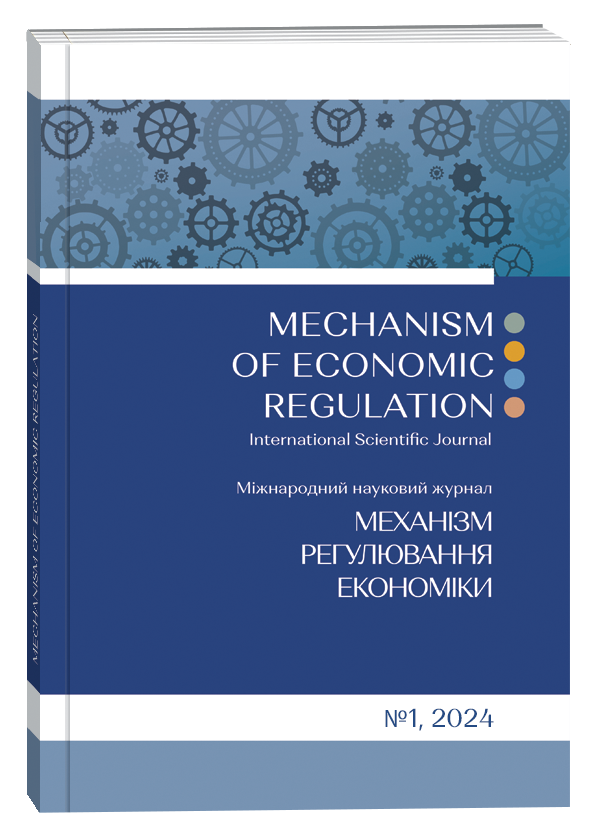APPROACHES TO THE FORMATION OF A SYSTEM OF EVALUATION INDICATORS FOR ANALYSING THE EFFECTIVENESS OF THE COMMERCIALISATION CHAIN
Abstract
Shorter product lifecycles, new product introductions, increased competition, the emergence of new markets and ever-changing consumer needs are forcing companies to bring new products to market. However, not all innovative solutions are commercially successful. At the same time, there are many systems for assessing the effectiveness of the commercialisation chain that would meet the needs of companies in different sectors. The aim of the work is to systematise evaluation indicators and to develop recommendations that can be useful in forming a system of evaluation indicators for analysing the effectiveness of the commercialisation chain. Currently, there are various approaches to the evaluation of innovation commercialisation. Researchers base them on indicators grouped according to specific criteria with certain weights. The company can choose one of these approaches or develop its own. At the same time, they need to consider the following points. When creating a system of evaluation indicators, it is advisable to use as many indicators as are most relevant to the organisation's objectives. When creating this set of indicators, one should consider different aspects (effects) of commercialisation. It is better to focus on objective indicators (indices); however, in their absence and the need to calculate indicators with different units of measurement, there is a need for their normalisation. When determining the weights of groups and individual indicators, in order to achieve greater objectivity, it is possible to use simultaneously the methods of balancing, weighting and general category weighting. After calculating the integral indicator, it is necessary to check its adequacy using various methods and to compare its value in different scenarios. The data approach to the development of the system of evaluation indicators for the analysis of the effectiveness of the commercialisation chain will contribute to the formation of a sufficiently objective evaluation system that takes into account the various impacts of commercialisation (economic, market, social, environmental, and so forth).
References
Nakonechna, O. S., Makhonko, O. M. (2016). Pokaznyky komertsializatsii innovatsiinykh proektiv [Indicators of commercialization of innovative projects]. Eastern Europe: Economics, Business and Management, 4(04), pp. 189–192.
Chorna, M. V., Glukhova, S. V. (2012). Otsinka efektyvnosti innovatsiinoi diialnosti pidpryiemstv [Evaluation of the efficiency of innovative activity of enterprises]: monograph. Kharkiv: KhDUHT, 210 p.
Kostsyk, R. S. (2016). Komertsializatsiia innovatsiinoi produktsii mashynobudivnykh pidpryiemstv [Commercialization of innovative products of machine-building enterprises]: autoref. Dissertation Abstract. Lviv: NU "Lviv Polytechnic", 238 p.
Palmberg, C. (2006). The sources and success of innovations - Determinants of commercialisation and break-even times. Technovation, 26(11), pp. 1253–1267.
Geipele I., Staube T., Ciemleja G., Geipele S., Zeltins N. and Ekmanis J. (2015). The Development and Design of Engineering Economic Indicator System for Nanotechnology Industry Product Manufacturing: a Case Study of Latvia. Latvian Journal of Physics and Technical Sciences, 52(5).
Myroschenko, N. Yu., Pauk, O. E., Zalutskyi, V. P. (2012). Komertsializatsiia innovatsiinoi produktsii mashynobudivnykh pidpryiemstv [Commercialization of the enterprise's innovative products: evaluation method]. The Economic Messenger of the NMU, 3, pp. 80–85.
Perminova, S. O. (2020). Komertsializatsiia innovatsii: Konspekt lektsii [Commercialization of innovations: Synopsis of lectures]: ed. manual for students specialty 073 "Management", educational and professional program "Management of investments and innovations" / KPI named after Igor Sikorskyi; editor: S. O. Perminova. Kyiv: KPI named after Igor Sikorskyi, 127 p.
Zozulyov, O. V., Skorokhod, K. O. (2012). Protsedura otsiniuvannia mozhlyvosti komertsializatsii tekhnolohii (na prykladi tekhnolohii priamoho vidnovlennia zaliza) [The procedure for assessing the possibility of commercialization of the technology (on the example of the technology of direct iron recovery)]. Economic bulletin of NTUU "KPI": collection of scientific papers, 9, pp. 193–199.
Kutsik, V. I., Klipkova, O. I. (2015). Intehralna otsinka komertsializatsii obiektiv intelektualnoi vlasnosti u systemi innovatsiinoho rozvytku pidpryiemstv [Integral assessment of commercialization of intellectual property objects in the system of innovative development of enterprises]. Trade, commerce, entrepreneurship, 8, pp. 34–37.
Loustric, I., Matyas, M. (2020). Exploring city propensity for the market success of micro-electric vehicles. European Transport Research Review, 12. DOI: https://doi.org/10.1186/s12544-020-00416-8
Nepelski, D., Van Roy, V. (2021). Innovation and innovator assessment in R&I ecosystems: the case of the EU Framework Programme. The Journal of Technology Transfer, 46, pp. 792–827. DOI: https://doi.org/10.1007/s10961-020-09814-5
Khomenko, L. M., Vasilyeva, T. A., Nebaba, N. O., Kutsenko, V. I. Komertsializatsiia novoho produktu na rynku: systema faktoriv vplyvu [Commercialization of a new product on the market: a system of influencing factors]. Actual problems of economics, 7, pp. 115–121. DOI: https://doi.org/10.32752/1993-6788-2023-1-265-115-121


